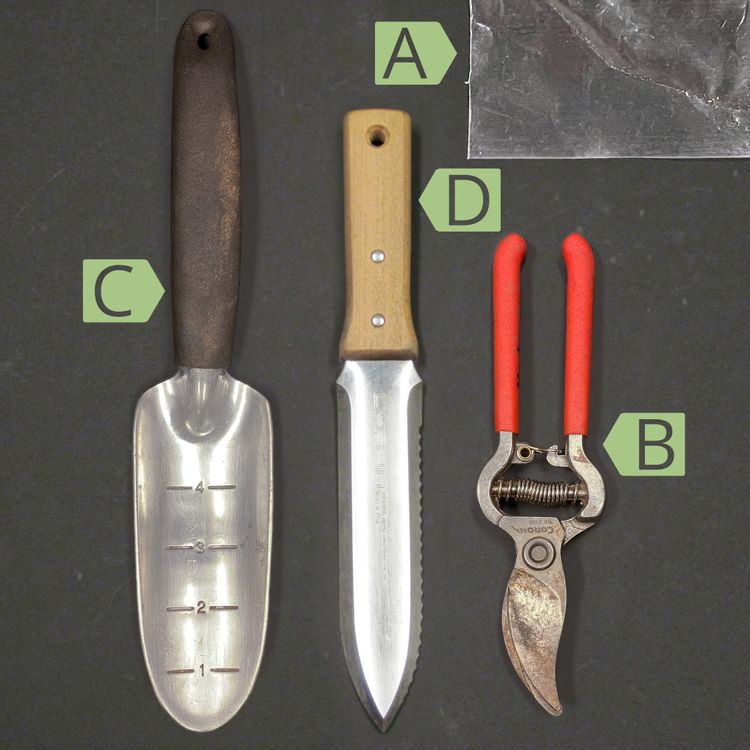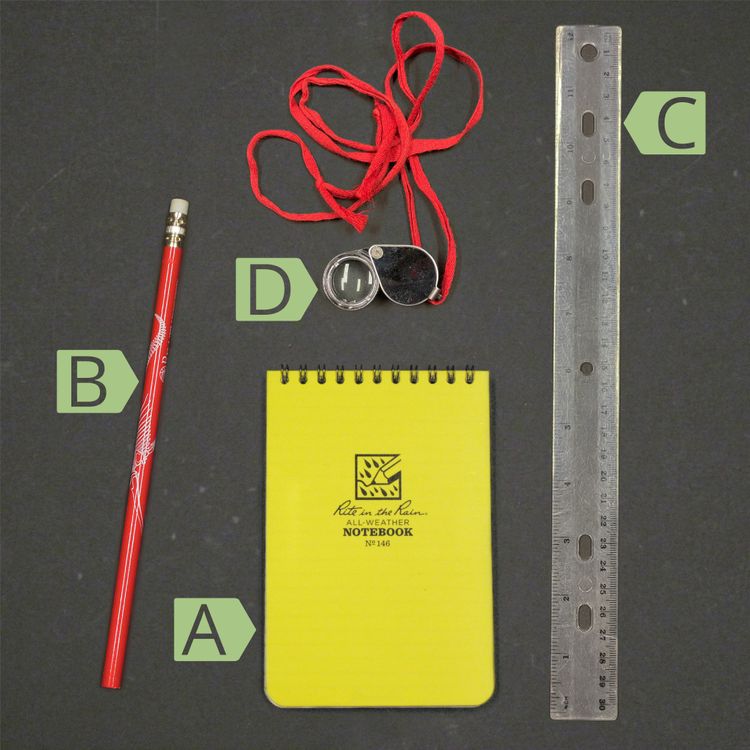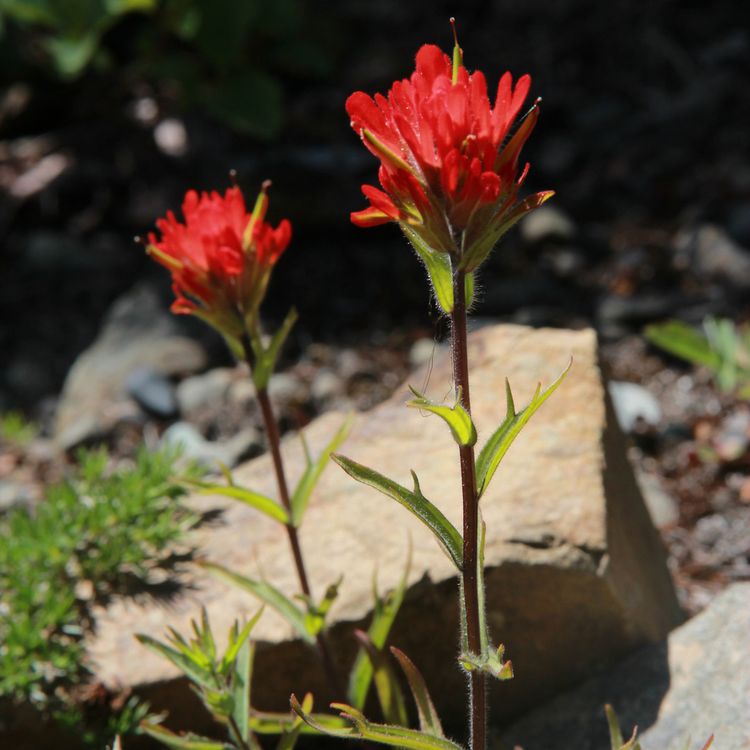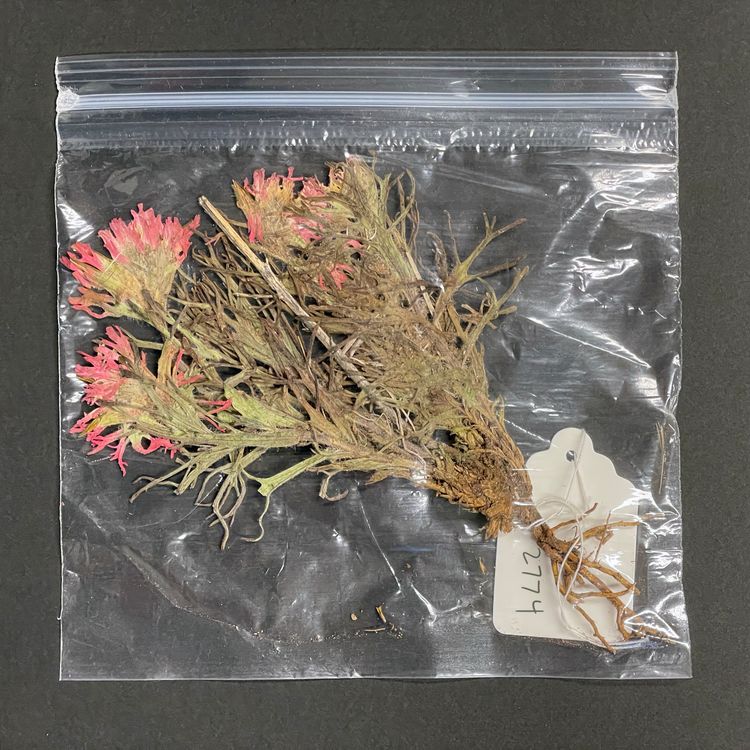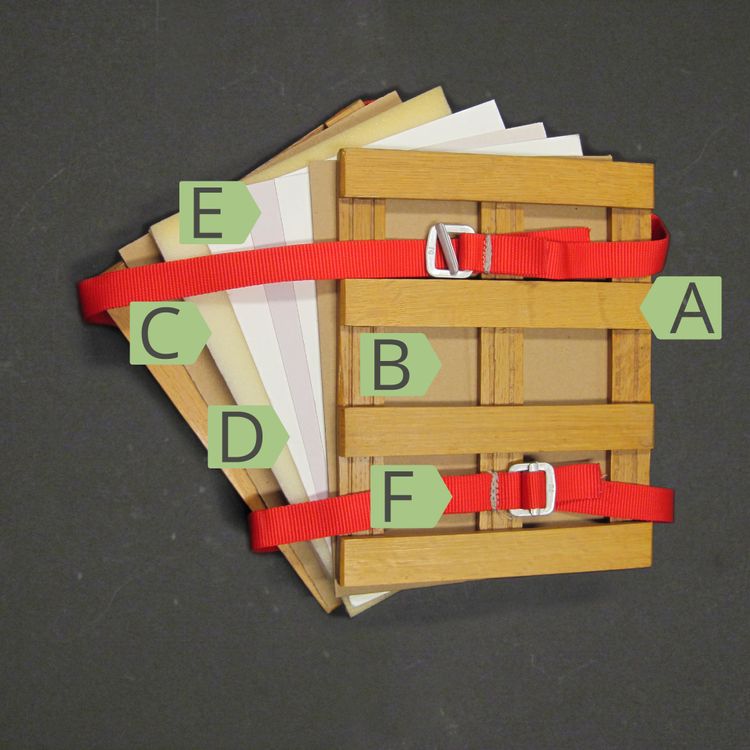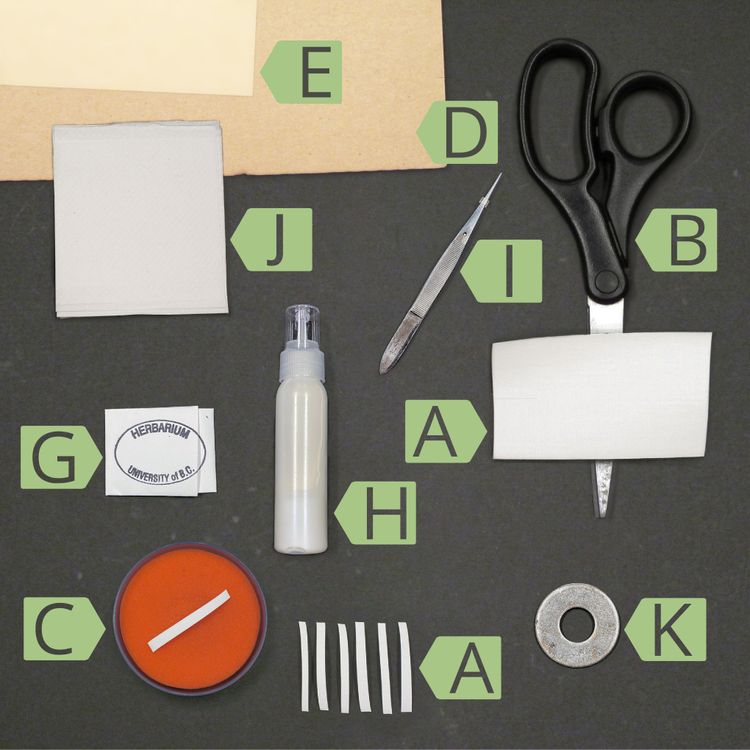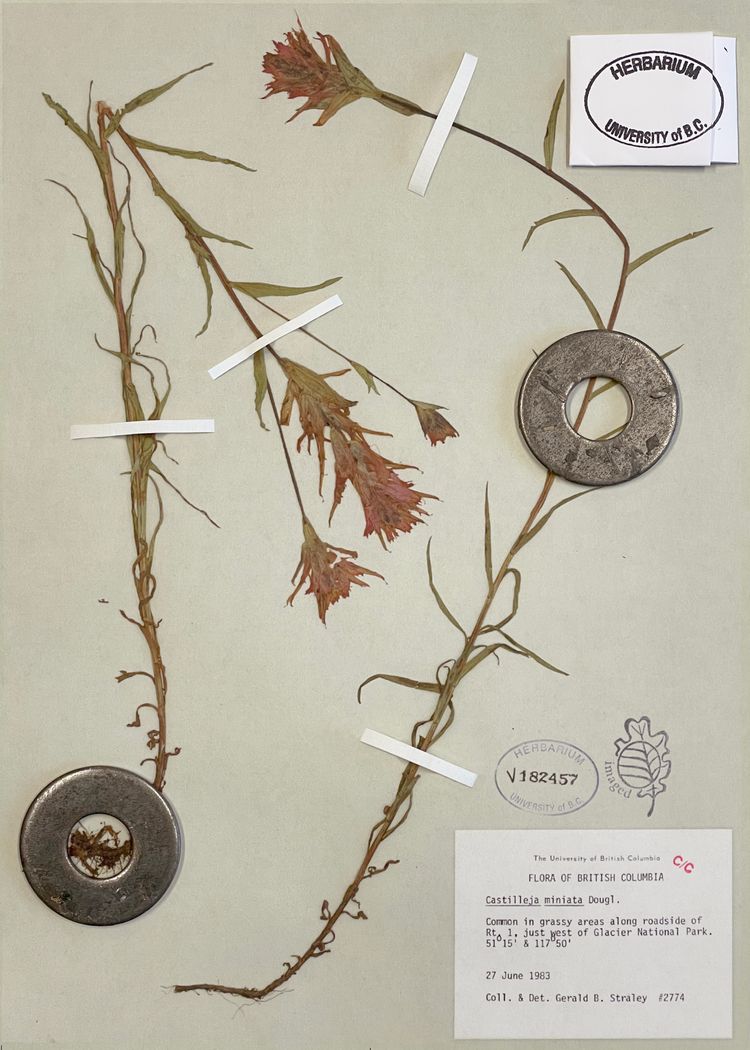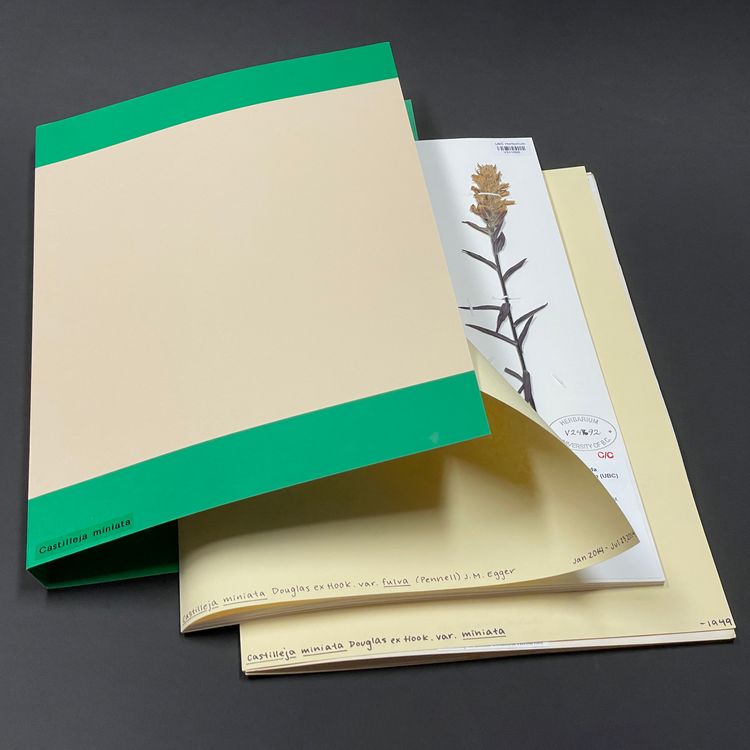Chapter 1: Preparing to Collect
“Before you go into the field, or your backyard, you must first get prepared!”
“You don’t need to spend a lot of money to collect and press plants. This activity is inexpensive and easy to enjoy, making this a very inclusive science.”
Tools for Collecting
- A) Plastic bags
- B) Secateurs
- C) Hand trowel
- D) Hori hori similar to a hand trowel, helps to dig underground plant materials, such as roots, bulbs, and rhizomes.
Tools for Documenting
- A) Waterproof field notebook
- B) Wooden pencils
- C) Ruler
- D) Hand lens (or loupe) is essential for seeing small features of a plant in the field. Wearing it like a necklace means you’re always prepared to have a quick “look-see”.
Responsible and Ethical Collecting
“Do your due diligence: understand protective agreements and apply for permits before you collect. While these actions did not always occur in the past, now is the time to Respect Where You Collect!”
